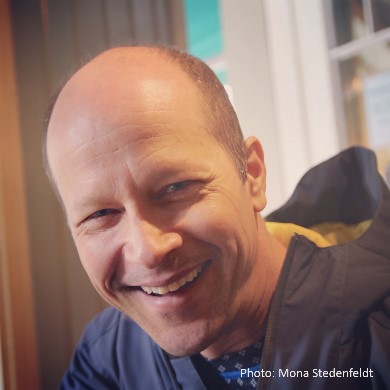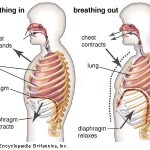Breathing Techniques – Are They Really Good?
By Brett Miller
May 9, 2018
The aim of breathing techniques is to increase breathing efficiency. Efficient breathing depends on the efficient functioning of the anatomical parts that are involved in breathing. And the efficiency of each of these breathing parts is, in turn, dependent on other parts with which they are intimately involved with, and those parts are in turn dependent on …. Are you getting the picture here? In short, efficient breathing is fully dependent on the efficient and balanced use of the whole being. While it may at first seem counterintuitive, the path to more efficient breathing is to forget about breathing altogether, and instead bring attention to the balance of the whole.
As an example, we are told that it is good to breathe into expanded lower lungs where a greater amount of oxygen uptake occurs. We are told that an effective method to fulfill this goal is to place open hands a small distance from the side of the ribs and breathe in a manner that causes the lower ribs to expand into them.
Now read closely, because here is the tricky and deceptive part.
Many people can successfully fulfill the task at hand. Further, they may be very pleased, and even use the occurrence as proof, that a greater efficiency can be achieved via direct breathing techniques. And rib widening is one of those methods.
I find that such a conclusion requires a suspension of critical observation, and that what really has happened is nothing at all. While the person was absorbed with making his ribs go out to his hands, he was most assuredly unaware of the amount of tension he was using in holding his arms in that position, or the amount of tension in the neck as he looked down to see the lung expansion, or the manner with which he was sitting or standing. In short, the person was fixated on the job at hand and not taking into consideration his activity in relation to his whole being. This narrow “direct method” mindset caused the whole to be that much less balanced and, ironically, caused less efficient breathing.
I advocate that no great focus should be placed on breathing. Take, as an example, a Pilates student who frequently holds his breath in his workout, unconsciously exhaling forcefully and gasping inwardly. The first step I take to deal with this situation is to supportively bring this behavior to his attention. I also explain to him that it is happening because of the excess amount of tension used in his work.
I instruct the student not to try to correct the problem. This is no easy task because with the realization of doing “something wrong”, he will more times than not want to fix the problem directly. But with encouragement, the student becomes comfortable with “being wrong”, while observing closely his actions – making connections.
While continuing to encourage the student to resist the urge to “fix” the problem, I point out that the breathing pattern is closely associated with excess tension and lack of balance in the body, especially in the neck, shoulder and chest area. That excess tension is associated with a lack of support from the lower body (cue in “The Powerhouse”).
After some time, patience and a wide focus, we are ready for the next step, which is to do simple exercises while employing a more correct use of the whole. I instruct the student to release the neck, shoulder and chest area, while using the strength of the Powerhouse. The physical tension employed for many years is what feels right to the student, so again I need to encourage him to “be wrong” as he uses less tension. After a short while, he starts to become used to being “wrong” and even starts to have a little fun working in the “wrong” way.
I have found that an effective way to teach new ways of working is for me to do an exercise while the student places his hands on me. I first purposefully add tension while doing the exercise, and then repeat using more powerhouse support and upper body ease. This often helps the student to recognize a similar tension pattern in his own body. Then, with an occasional gentle touch from me to the neck and shoulder area, the student begins to perform with less tension, more powerhouse support, and a better overall balance.
Et voila! The breathing parts function more as they should, and the student is breathing more rhythmically and calmly, all in a sustainable manner.
 Brett Miller started his professional life in the world of ballet, working with various companies in the US. Later on he moved to New York and branched out into modern along with the ballet. Since then, he has lived in Finland and now in Stockholm Sweden.
Brett Miller started his professional life in the world of ballet, working with various companies in the US. Later on he moved to New York and branched out into modern along with the ballet. Since then, he has lived in Finland and now in Stockholm Sweden.
Brett became a Pilates instructor in 2006 after having received a full certification from Stott Pilates, and has been teaching ever since at his home base in Stockholm. His classes are known to be challenging and inspiring, with a strong emphasis on working the intellect. Brett challenges his students to go beyond the physical exercise to develop a deeper wisdom of the whole being.
Brett travels as a guest teacher in such cities as London, Paris, Oslo, San Francisco, Pittsburgh and Gothenburg.
In March 2013, Brett founded Pilates Intel (pilatesintel.com), the weekly Pilates magazine that has become highly popular with thousands of Pilates professionals and enthusiasts worldwide. The intelligent technique that Pilates is, and the chance to continue to be physical, attracted Brett to this Pilates after being so long in the dance world. Along with teaching Pilates, Brett also works on a consultant basis as a software developer.

